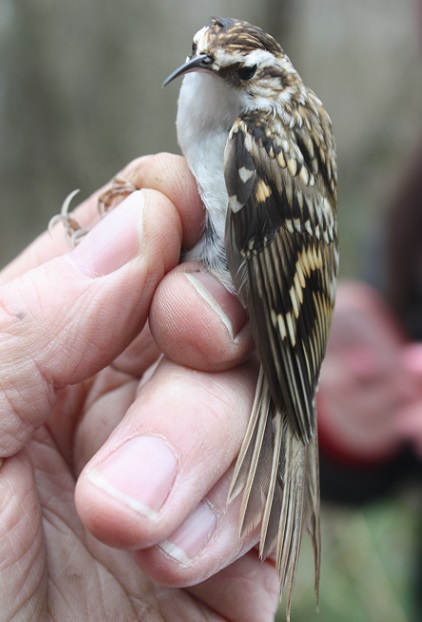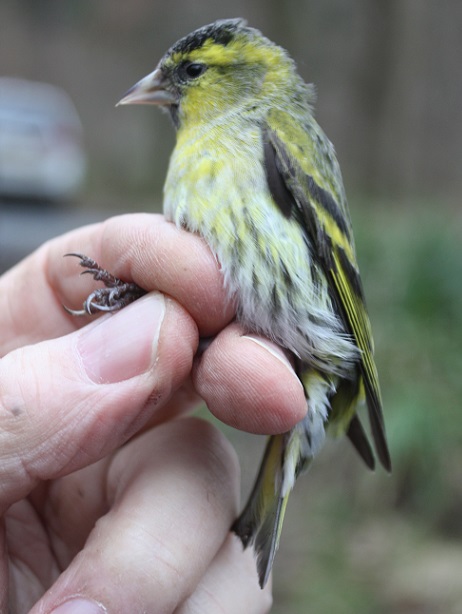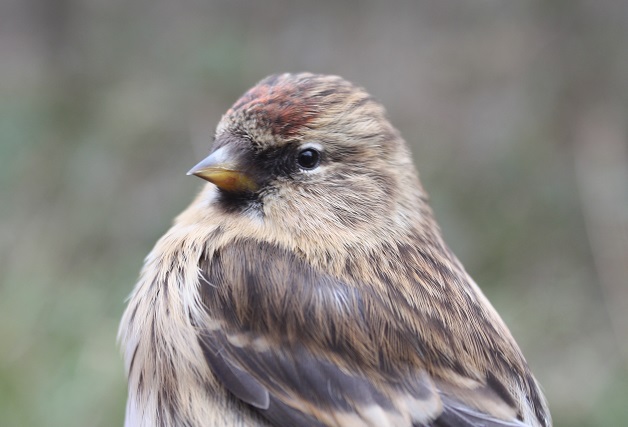A second session in a Forestry Commission wood in the Braydon Forest where I have recently had to move the feeding station, produced another good and varied catch. Unlike Red Lodge, I had to move the feeding station because the path on which it was previously set is now impassable: a combination of wet weather and horses has churned it into a real swamp. Also unlike Red Lodge, there have been no subsequent vandalism problems.
I was joined for this session by Jonny, Steph and her daughter Lillie. Lillie is a delight and, at a mere seven years of age, is knowledgeable of the birds we process and is very confident in her handling of them (well, all except the Great Spotted Woodpecker, anyway). Definitely a ringer of the future. However, her major contribution to the day was her discovery that the rulers we use for measuring the wings (which have a small rectangular stop at the 0 point of the rule) could be made to walk across our ringing table if placed on the end stop. We have a new game for quiet sessions.
The wood offered decent shelter from what wind there was, the weather was dull and overcast for most of the session, almost perfect bird ringing conditions. We set three net rides, anitcipating that most of the action would be around the feeding station. 72 metres down the main track and 12 metres behind the bird feeders, to catch anything coming through the wood to visit the station. The list of birds caught was: Great Spotted Woodpecker 1(1); Nuthatch (1); Treecreeper 1; Blue Tit 8(6); Great Tit 3(4); Coal Tit 10(6); Marsh Tit (2); Long-tailed Tit (8); Dunnock (2); Robin 4; Blackbird (1); Chaffinch 3; Goldfinch 1; Siskin 2; Lesser Redpoll 1. Totals: 34 birds ringed from 10 species; 31 birds retrapped from nine species, making 65 birds processed from 15 species.
There were a number of interesting things arising from the catch. It is known that Long-tailed Tits hang around in family groups. We caught numbers JJP468 to JJP473 inclusive. All were ringed on the 24th August last year at Somerford Common. We also caught consecutively numbered adult male and female Great Tits, originally ringed in December last year, adjacent to each other in the same net. I had the same occurrence at Red Lodge yesterday, where both were originally ringed in March of last year, and I have seen it before in Ravensroost. I have searched the literature and, although male Great Tits are said to be usually monogamous within the breeding season, there is nothing about the maintenance of the pair bond outside the breeding season. Looks as though there might be a study and a paper in this. Of course, this is the sort of thing that can only be investigated through the ringing scheme, as it is the only permanent way of identifiying individuals.
We ringed our second (and third) Siskin for the site, a male and a female (the first was back in November 2013), plus our second Goldfinch for the site (the first was in November 2015), our sixth Great Spotted Woodpecker of the year, and a Treecreeper that, for once, looked comfortable when photographed (too often they adopt a hunched posture that just doesn't look right). A few photographs from today's session follow:


 ST/JC/SB/LB
ST/JC/SB/LB
